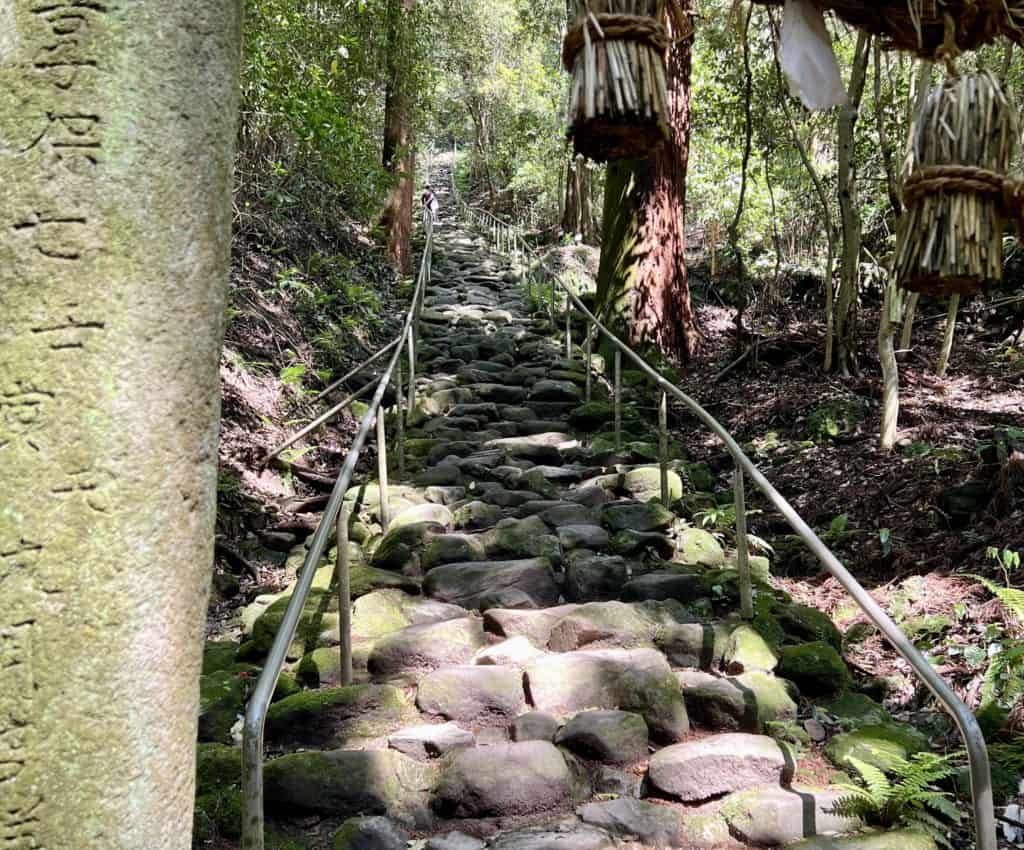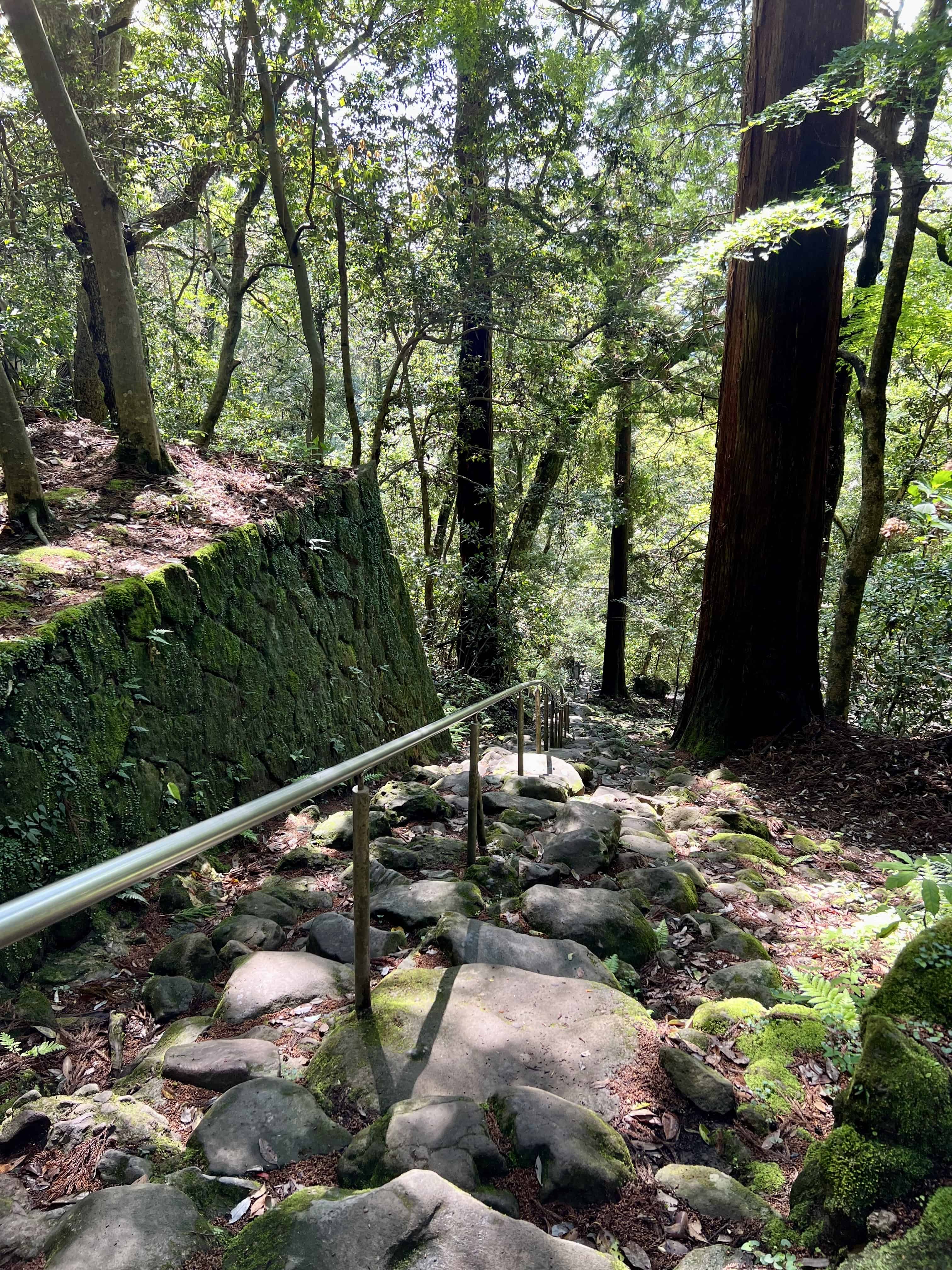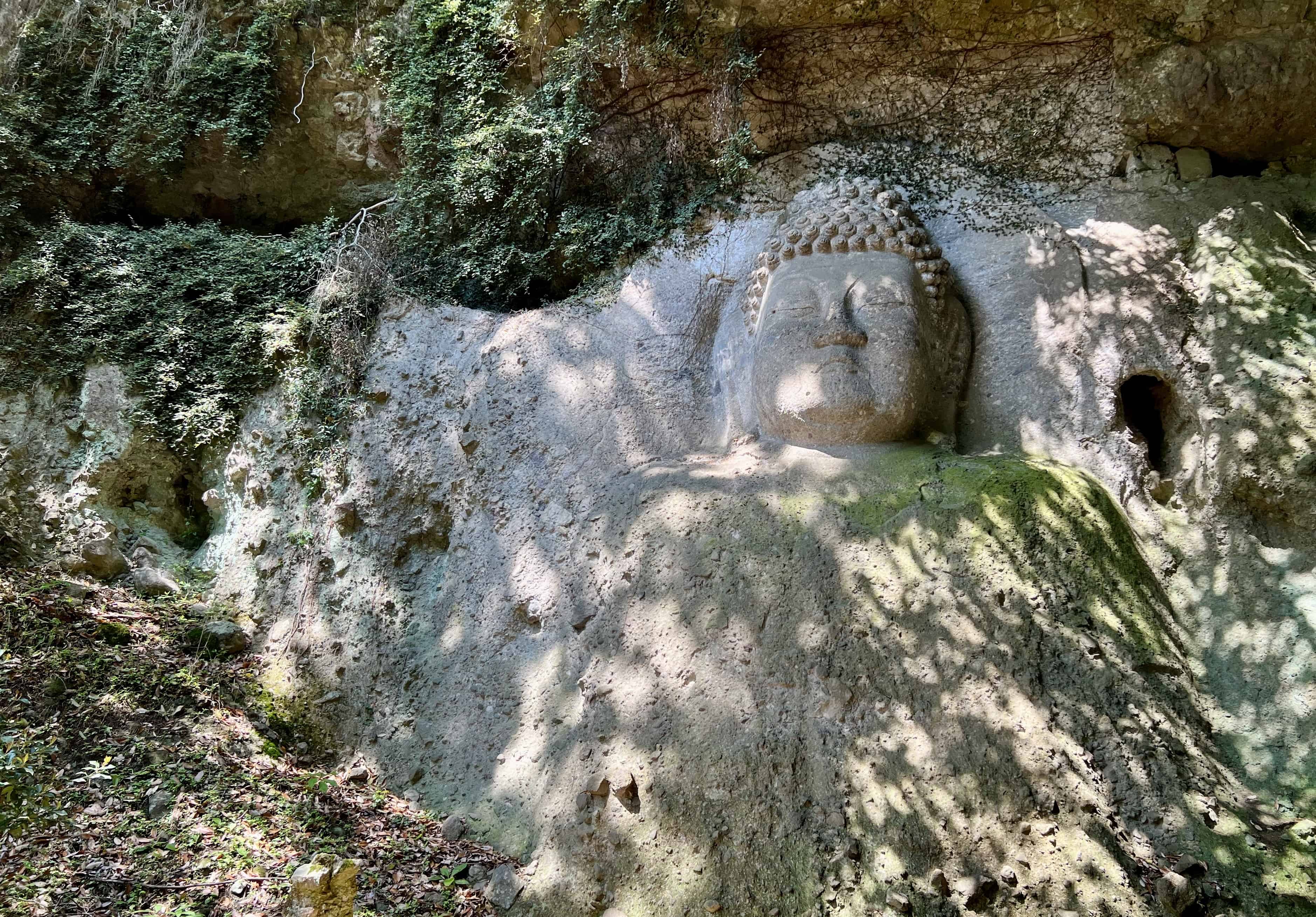A hodgepodge of stones leads to the Kumano cliff carvings

I recently visited the Kunisaki Peninsula of Oita Prefecture. This area has long been home to innumerable shrines and temples, many of these classic representations of Shinbutsu-shūgō, 神仏習合, the age-old syncretism of Buddhism and Shinto.
Hidden in the forest near the Kumano Gongen Kumano Shrine are some extraordinary Buddhist rock carvings. These can only be reached by a staircase that is nothing more than a jumble of stones on the hillside. How this unique “staircase” came to be is a story worth telling.
Gongen-sama and the oni
Long ago, the powerful deity Gongen-sama — the Buddhist manifestation of a Shinto kami — moved from the Kumano area of the Kii Peninsula to Tashibu in what is now Oita Prefecture. The local people paid homage to him, and their village prospered. They became healthy, fat, and rich.
During those happy days, from somewhere — no one knows where — a great oni (ogre of the mountains) came and took up residence. This enormous oni yearned to feast upon the flesh of the villagers, but the fierceness of Gongen-sama’s protection prevented him. Nevertheless, day after day, the oni pestered Gongen-sama to let him eat the villagers.
Hoping to put an end to his badgering, Gongen-sama presented the oni with a deal.
Tonight, from the time the sun sets until the first crowing of the rooster at dawn, build a staircase of one hundred stones starting at the torii gate at the foot of the mountain and reaching up to the temple near the rock-face carvings. If you complete this task, I will grant your wish. If you cannot complete the task, I will eat you alive.
Gongen-sama was sure it would be impossible to build such a staircase overnight. He believed he had put and end to the oni’s importunity by asking the impossible.
But Gongen-sama had underestimated the oni.
So determined was he to eat the delicious flesh of the villagers that when the sun set, the oni diligently searched the dark mountain for stones and worked furiously to build the staircase.

From the quiet of his bed in the depth of the night, Gongen-sama heard the grunts and thumps of the oni carrying and placing stones ever closer to the temple. He went outside to count the stones, and to his astonishment, he found that the oni was carrying the 99th stone to the top.
Alarmed, Gongen-sama thought, The horrors! If I don’t do something quickly, the people of this peaceful village will be devoured by the oni!
Casting around for an idea, he raised his voice as loudly as he could and called out, “Ko-ke-kokkoooo.”
When that sound reached the oni, he stood straight, perked his ears, and panicked.
“The rooster is crowing! It’s already dawn! If I stay here, Gogen-sama will eat me! There’s nothing to do but run!”
The oni ran as fast as his stout, hairy legs could carry him, shouldering the 100th stone as he went.
Dazed and flustered, he crashed through the mountain forest for six long kilometers. The oni finally emerged onto flat land and stopped to catch his breath, painfully gasping. It was only then that he realized he was still carrying the last stone. Disgusted, he tossed it away, but instead of tumbling, it landed upright. To this day, the place the stone landed is called Tateishi, 立石, or standing stone.
After that final great effort, the oni collapsed, his utter exhaustion extinguishing his breath.

When the villagers heard of the death of the oni, a great rejoicing spread among them.
Thanks to Gongen-sama and his quick thinking, grateful villagers continue to climb the rugged stone staircase every morning and evening to honor the benevolent protector Dainichi-sama, whose gentle countenance is carved into the cliff at the top of the staircase so hastily built by the hungry oni.
If you have questions about Japan or suggestions for articles, please add them in the comments. For more photos and information on Japan, follow me on instagram at: https://www.instagram.com/more_than_tokyo/




